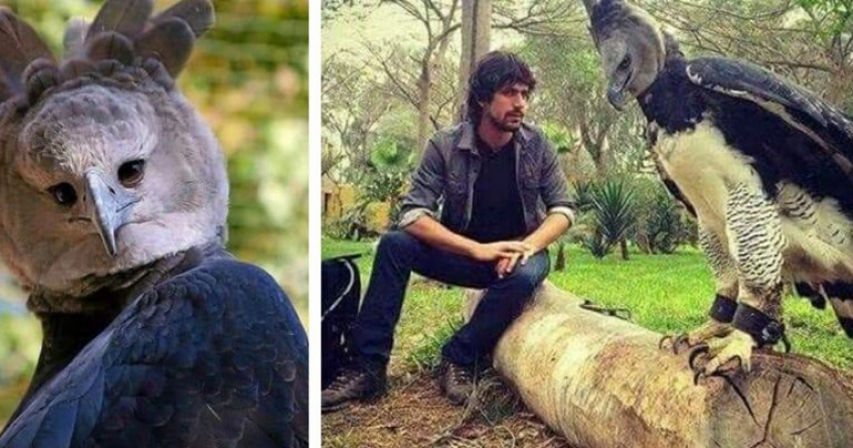The Harpy Eagle, A Bird So Big, Some People Think It’s A Person In A Costume
- 4 years ago

Nature is rich and unsurpassed, versatile, impressive, and wondrous. Its rare creations can surprise and impress even the most devoted nature lovers and the most experienced naturalists.
This is the case with the Harpy Eagle, a creature of admirable size. The majestic bird has a crown of raised grey feathers, stunning eyes, expressive face, and black-and-grey feather collar.
They were named after the mythical creature Harpy – a half-human, half-bird person.
Harpy eagles are the largest, most powerful raptors found in rainforests, and among the largest species of eagles worldwide. This eagle can be up to 3 feet high, with a wingspan of up to 7 feet, which is shorter than other eagle species.
Males weigh up to 12 pounds, while females are heavier, weighing between 13 and 20 pounds. Apart from their weight differences, they are identical in terms of appearance.
Due to their peculiar face and size, some claim that these birds look like people wearing a bird costume.
🔥 the Harpy Eagle from r/NatureIsFuckingLit
Their natural habitat is the upper canopy of tropical lowland forests, stretching from Mexico to Brazil and northern Argentina.
They are birds of prey and can be of two kinds, the American and the Papuan type.
The powerful talons keep the Harpy Eagle at the top of the food chain in the forest, and they eat larger prey than smaller birds, including sloths, snakes, tree porcupines, and monkeys.
Harpy Eagle Claw
They are excellent hunters, with a speed up to 50 miles per hour. Also, they save their energy and do not soar for long distances, but sit on a lookout for hours, waiting for their prey to appear.
Unfortunately, deforestation threatens their habitat, and Harpy Eagles are a rare sight in Central America these days.
Moreover, as they are monogamous and raise just one eaglet every two years, even a small decline in numbers can drastically affect their population. This could in turn trigger other losses as well, as they naturally control the populations of animals like Capuchin monkeys.
Sources:
Comments